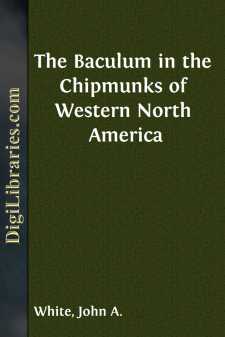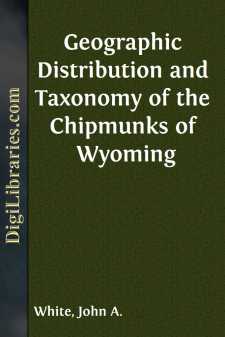Categories
- Antiques & Collectibles 13
- Architecture 36
- Art 48
- Bibles 22
- Biography & Autobiography 813
- Body, Mind & Spirit 142
- Business & Economics 28
- Children's Books 15
- Children's Fiction 12
- Computers 4
- Cooking 94
- Crafts & Hobbies 4
- Drama 346
- Education 46
- Family & Relationships 57
- Fiction 11828
- Games 19
- Gardening 17
- Health & Fitness 34
- History 1377
- House & Home 1
- Humor 147
- Juvenile Fiction 1873
- Juvenile Nonfiction 202
- Language Arts & Disciplines 88
- Law 16
- Literary Collections 686
- Literary Criticism 179
- Mathematics 13
- Medical 41
- Music 40
- Nature 179
- Non-Classifiable 1768
- Performing Arts 7
- Periodicals 1453
- Philosophy 64
- Photography 2
- Poetry 896
- Political Science 203
- Psychology 42
- Reference 154
- Religion 513
- Science 126
- Self-Help 84
- Social Science 81
- Sports & Recreation 34
- Study Aids 3
- Technology & Engineering 59
- Transportation 23
- Travel 463
- True Crime 29
The Baculum in the Chipmunks of Western North America
by: John A. White
Description:
Excerpt
Introduction
The baculum is the bony part of the penis. In the species of the subgenus Neotamias the proximal part of the baculum is termed the shaft, and the distal upturned part is termed the tip. On the dorsal side of the tip there is a longitudinal ridge termed the keel. The proximal end of the shaft is termed the base (see fig. 19). Depending on the species, the shaft varies from 2.11 to 5.28 mm. in length, and the base may or may not be widened or deepened.
The purpose of this report is to: (1) Show the usefulness of the structure of the baculum as a taxonomic character in chipmunks; and (2) compare a classification based on the structure of the baculum with a classification based on the structure and appearance of the skull and skin.
The bacula which were borrowed from the University of Michigan, Museum of Zoology, were processed according to the method described by Friley (1947:395-397), whereas all others were processed according to the method described by White (1951:125). Thus the bacula that were borrowed from the University of Michigan, are maintained there in a separate collection, whereas the bacula borrowed from other museums and those that are at the University of Kansas, Museum of Natural History, are housed with the skulls of the corresponding specimens.
All measurements of the bacula were made by means of an eyepiece micrometer.
A total of 194 bacula were seen. All of these are in the Museum of Natural History of the University of Kansas, unless otherwise indicated by the following symbols:
BSUnited States Biological Surveys Collection.CNChicago Natural History Museum.LALos Angeles County Museum.MMUniversity of Michigan, Museum of Zoology.NMUnited States National Museum.UUUniversity of Utah, Museum of Zoology.I am grateful to Professor E. Raymond Hall for guidance in my study and thank Drs. Robert W. Wilson, Keith R. Kelson, and Edwin C. Galbraith, as well as other friends and associates of the Museum of Natural History, University of Kansas, for encouragement and valuable suggestions. Dr. William L. Jellison, United States Public Health Service, aided me in part of my field work and kindly sent me some specimens of chipmunks. My wife, Alice M. White, made the illustrations and helped me in many ways.
For the loan of bacula I thank Dr. William H. Burt, University of Michigan, Museum of Zoology. For permission to search for bacula on study skins, and to process those that were found, I thank Miss Viola S. Schantz, United States Fish and Wildlife Service, Mr. Colin C. Sanborn, Chicago Natural History Museum, Mr. Kenneth E. Stager, Los Angeles County Museum, Dr. David H. Johnson, United States National Museum, and Dr. Stephen D. Durrant, Museum of Zoology, University of Utah.
Assistance with field work is acknowledged from the Kansas University Endowment Association, the National Science Foundation and the United States Navy, Office of Naval Research, through contract No. NR 161 791.
Variation
Individual variation.—Individual variation is small....





